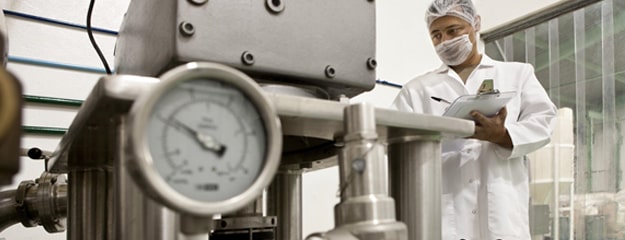Don’t Overlook These Maintenance Fundamentals

Ask OEMs or food manufacturers what sort of maintenance their pneumatic machinery requires, and some will be hard-pressed to share detailed guidelines, schedules or preventative measures to employ.
Aside from regular washdowns between products or during shifts, end users may not have much in the way of documented requirements for maintaining their pneumatic valves and actuators, or the pneumatic tubing and fittings that bring power to their machines.
If so, these organizations may be overlooking a major maintenance requirement: maintaining purity of the compressed air quality that powers their pneumatic operations. It can be an insidious source of concern to precision-made actuators and regulated valves if their quality is not maintained.
Beyond that critical need, OEMs also can help their customers establish proactive maintenance strategies that let them maintain productivity, even when components fail or need to be replaced.
Compressed Air Quality
The most critical area for pneumatic system maintenance is, ironically, one that many OEMs overlook: The global compressed air systems that power pneumatic processes, and the quality of compressed air they produce.
Because compressed air is generated and supplied by the user, in this case food and beverage manufacturers, its quality is their responsibility as well. But some manufacturers may not realize that contaminants present in their compressed air will decrease the life and productivity of downstream pneumatic equipment like valves, actuators, and connectors.
Regardless of whether the compressed air comes in direct contact with food products or is used to power a process, a clean, dry, reliable supply of compressed air is essential to maintaining efficient and cost-effective production. If pneumatic valves and actuators are subjected to high levels of these contaminants from the compressed air, they may develop clogs, be stripped of lubricants, and fail prematurely.
For this reason, most OEMs specify the quality of compressed air that must be presented to their equipment, often using the widely accepted ISO 8573 standard. This international framework helps users characterize and test the purity of compressed air at particular points in their systems, relative to dirt, water, and oil.
Air drying equipment, combined with proper pneumatic system filtration, ensures compressed air quality at various points of use. However to maintain air quality over time, the specialized pneumatic system filters must be replaced regularly — usually every 12 months. Pneumatic component warranties also may be tied to regular replacement of these filters.
Therefore, users that don’t use or replace these filters are ignoring a critical maintenance item that can lead to equipment failures and damage, and potentially void their warranty.
OEMs can prevent this by helping customers establish proper filtration and filter maintenance schedules, along with air quality testing procedures, which will ensure they supply their machines with properly maintained, high quality compressed air.
Condition Monitoring
Another strategy OEMs can recommend is condition monitoring via sensors. The technique helps end users monitor the health of specific machines or processes throughout operations. By continuously monitoring critical data associated with certain processes, sensors can alert operators if and when a particular machine is beginning to deviate outside of its desired operating ranges. Sensors also can flag these abnormal readings to let operators know that maintenance is required.
For example, pressure differential sensors monitor the pressure drop on compressed air filters, and provide a signal or indicator when pressure drop reaches a certain level, indicating that filter elements may need to be replaced. By alerting operators to these performance drops early, condition monitoring also helps prevent equipment failures.
As another benefit, by monitoring machine performance at mission-critical steps, operators will be alerted to potential problems before large quantities of nonconforming products are produced, which reduces operator costs.
Keeping Extra Assemblies On-hand
Even when air quality is maintained, core pneumatic components such as actuators, valves, and connectors may also require maintenance from time to time to keep them performing properly. These units have limited life cycles before they must be serviced and replaced. Considering that the average actuator can last for 10 million cycles, and may actuate as often as once every second during an 8-hour shift, its life expectancy could be reached in less than a year. During that time, it may be necessary for operators to replace seals and lubricate parts to keep equipment running smoothly.
OEMs can help their customers prepare for these events by supplying them with spare assemblies and other critical components to quickly replace those in need of service or replacement. Having extras on hand or in stock to replace modular-style units will keep packaging lines running and allows maintenance personnel to service valve assemblies according to their schedules, not the machinery’s.
A cautionary note about these spares however: OEMs will want to devise a system or program for having the used assemblies returned to them or discarded, to be sure that their customers do not attempt to reuse spare assemblies past their expected service lives, which could also reduce productivity and lead to other equipment problems.
OEMs that work with their customers to develop customized maintenance plans and suggest strategies for ongoing system monitoring and upkeep will go a long way to addressing needs that far too often are overlooked. In this case, going the extra mile is likely to result in higher productivity and lower operational costs for customers.



